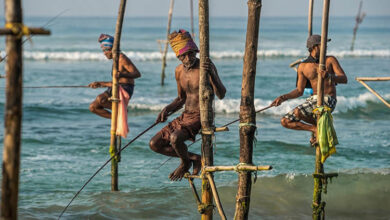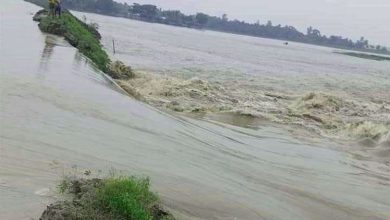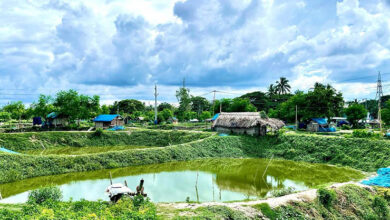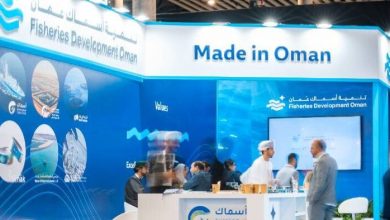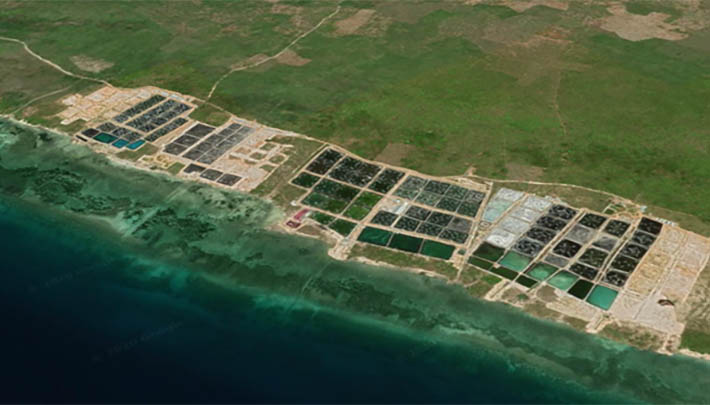
As global demand for farmed seafood rises, Indonesia wants to modernize its fisheries industry to capture a larger share of the US$421 billion market.
Fisheries in Indonesia play a significant role in the global food security. Its waters are home to more than 3,000 species of bony fishes, 850 sharks, rays, and chimaeras.
For millions of Indonesians, fishing is a source of food and a way of life, since nearly 40 percent live below the poverty line. Approximately 12 million Indonesians work in the fisheries industry.
According to the Ministry of Marine Affairs and Fisheries, exports of fishery products will reach US$7.2 billion by the end of 2024. Compared to 2020, when the Covid-19 outbreak severely damaged the sector, this represents a four-fold rise.
The government also intends to revitalize more than 300,000 hectares of abandoned shrimp farms.
Sadly, most of Indonesia’s fisheries are overexploited or fully exploited, and illegal fishing practices are widespread. Additionally, there are issues associated with food safety and quality control, limited infrastructure, and lack of access to financing.
More than 90% of its fish stocks are estimated to be overexploited or fully exploited in Indonesia. An estimated 15–30% of the entire catch is thought to be the result of rampant Illegal, unreported, and unregulated (IUU) fishing, which severely impacts Indonesia’s fisheries sector. In Indonesia, fishing laws are frequently not enforced, which eases the continuation of illicit and unsustainable fishing methods.
Destructive fishing techniques like dynamite and trawling are widely used by Indonesian fishermen, which also harm marine ecosystems and coral reefs while also killing non-target species and producing unanticipated capture rates.
Although up to 50% of the fishery sector’s production is thought to have been lost due to overfishing, the Indonesian authority is hardly taking any measures against it. Because data scarcity is a major obstacle to combating overfishing. It is more difficult for the government to enforce the laws if they don’t know which species are overfished, where, and in what amounts.
In complicated multi-species fisheries, such as those in Indonesia and many other tropical developing nations, meaningful fish data simply does not exist, making sustainable management nearly difficult.
However, artificial intelligence (AI) has the potential to digitally change Indonesia’s fishing industry and combat these challenges. AI technologies may also help Indonesian fisheries increase accountability and traceability in their supply chains, which is critical for satisfying the needs of more conscientious customers.
The Government’s push to digitize the Indonesian fishing industry has already focused attention on aquaculture firms, many of whom are leveraging AI to meet demand.
For example, Temasek-backed eFishery, established in 2013, employs automated feeding gear, but many indigenous farmers traditionally feed the fish by hand.
These feeders monitor the hunger levels of fish and shrimp based on their motions, avoiding the issue of over- or under-feeding when done conventionally.
Jala, a digital solution specialist for the shrimp farming company, employs technology to keep track of environmental parameters and feeding data, which farmers can then utilize to optimize productivity.
Its smartphone app presently has over 20,000 users and monitors shrimp in more than 35,000 ponds.
“By creating an equitable digital economy, the use of AI and other modern technologies might lessen social and economic inequality in a field based on traditional farmers and poor yields,” said Liris Maduningtyas, the chief executive of aquaculture startup Jala.
Aruna, an Indonesian company that aggregates supply chains for the marine and fisheries sectors, has developed a platform that provides fishermen with more direct and extensive access to clients worldwide.
Additionally, Aruna regularly collaborates with regional grocery e-commerce sites like Shopee, Bukalapak, and Tokopedia to offer fish goods to their product listings.
Since 2019, increasing the productivity of its aquaculture has been Indonesia’s top development goal. Reaching its desired objective is still feasible, though, with the right use of AI.
Jaber Bin Abdul Bari
Department of Oceanography, NSTU

